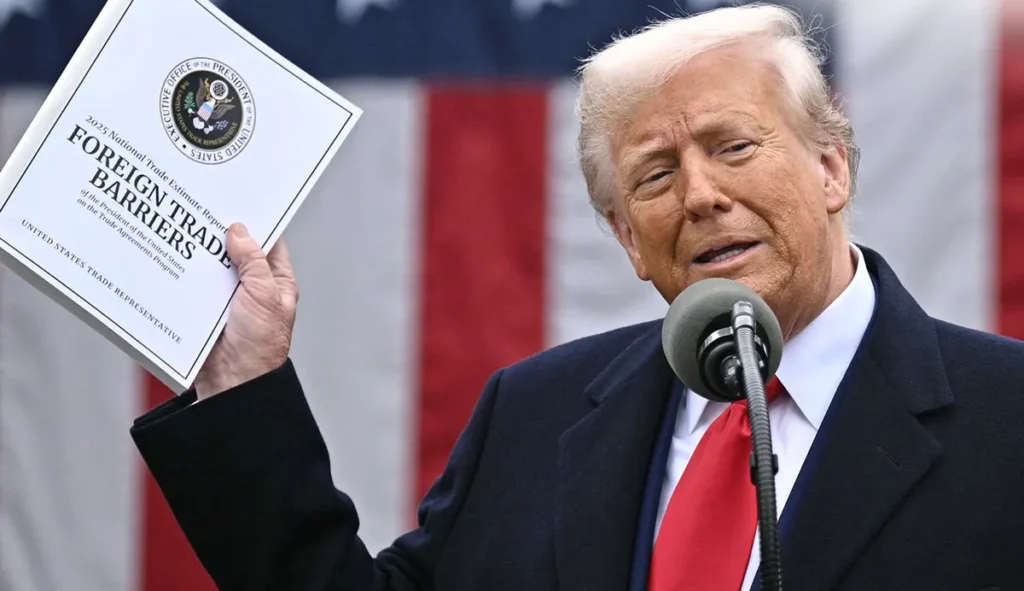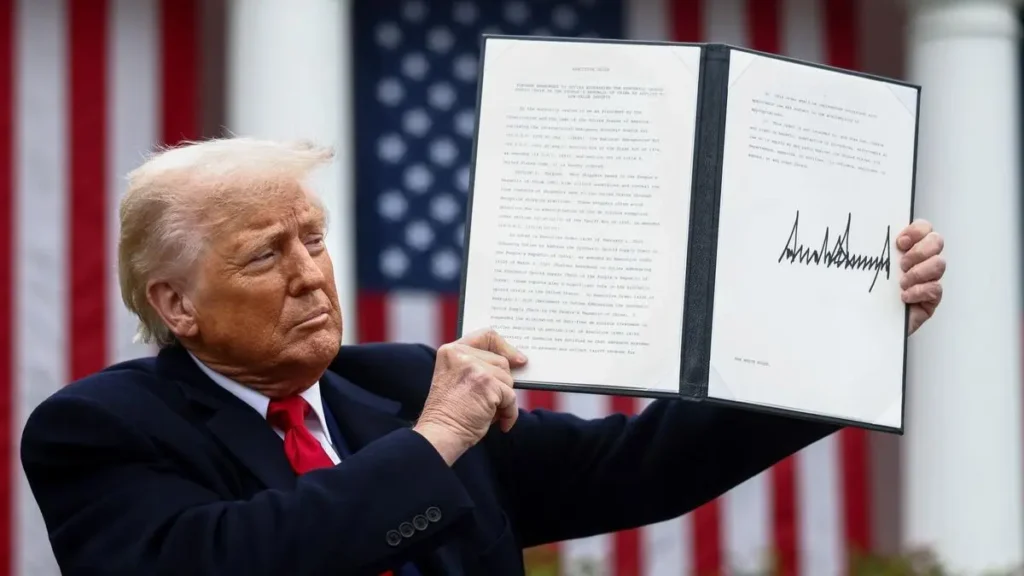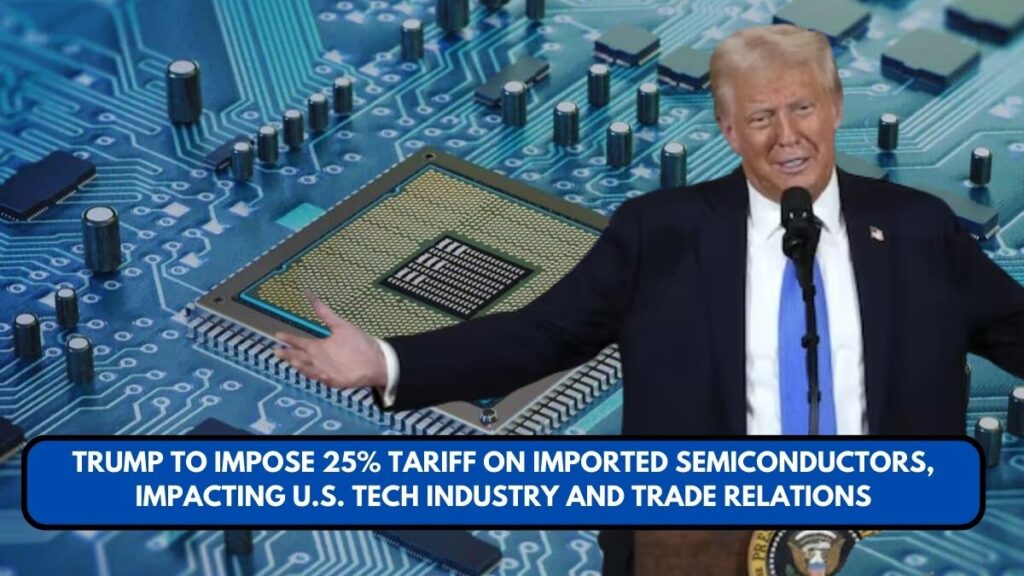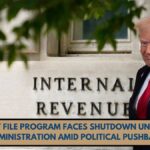In a bold move to strengthen domestic manufacturing, President Donald Trump has unveiled plans to impose tariffs on foreign-made semiconductors. These tariffs, which could start at 25%, are expected to increase gradually throughout the year. This announcement, made in early 2025, has sent shockwaves through global markets, especially in the tech sector.
What Are Semiconductor Tariffs?
Semiconductors are essential components used in everything from smartphones to computers, cars, and medical devices. As the foundation of modern electronics, they are critical to global supply chains.
However, the United States has increasingly relied on foreign countries—particularly Taiwan, South Korea, and China—for their semiconductor supply. This reliance has raised national security concerns, prompting the U.S. government to explore strategies to bolster domestic production.
Trump’s tariffs, which will be applied to imports of semiconductor chips, are intended to encourage U.S. companies to invest in local manufacturing. The move comes as part of broader trade policy changes aimed at reducing the country’s dependence on foreign goods and fostering homegrown innovation.

Key Details of the Tariff Announcement
The tariff proposal, which could be implemented as early as April 2025, is expected to begin at a 25% rate on semiconductor imports. Over the following months, this tariff could escalate to as high as 100%. This decision follows a formal investigation under Section 232 of the Trade Expansion Act, which evaluates whether certain imports threaten national security.
While the tariffs will undoubtedly affect semiconductor suppliers in major exporting countries like Taiwan, South Korea, and China, the impact on U.S. businesses cannot be overlooked. Large companies such as Apple, Intel, and Nvidia may face increased production costs, which could lead to higher prices for consumers.
The tech industry, which heavily depends on imported semiconductors, will likely experience increased pressure to either shift production to the U.S. or pass on the costs to consumers.
To mitigate the impact on U.S. manufacturers, Trump has also proposed exemptions for companies that move their semiconductor production to American soil. The goal is to incentivize companies to shift their supply chains back to the U.S. and strengthen domestic capabilities in high-tech industries.
Impact on Global Trade and the U.S. Economy
The proposed semiconductor tariffs have the potential to disrupt global trade and significantly impact relationships with major semiconductor exporters. Taiwan, South Korea, and China are key players in the semiconductor market, and these tariffs could strain trade relations between the U.S. and these countries.
In response, these nations may retaliate with their own tariffs or trade restrictions, escalating tensions further. The U.S.-China trade war, which began in 2018, provides a backdrop for this latest tariff push. With tensions already high, these new tariffs could exacerbate ongoing disputes between the two countries.
On the flip side, proponents of the tariffs argue that this move could boost U.S. manufacturing and reduce reliance on foreign imports. By bringing semiconductor production back to the U.S., the country could bolster its technological leadership and create new jobs in high-tech sectors. However, some experts warn that this could lead to higher costs for U.S. consumers and hurt small businesses reliant on affordable semiconductors.

Potential Effects on U.S. Tech Companies
Large tech companies like Apple, Intel, and Nvidia could face significant challenges as they adjust to the higher costs of semiconductor components. These companies, which are major players in the global tech market, rely on imported chips for everything from smartphones to computers.
If the tariffs lead to higher production costs, companies may either raise prices on their products or absorb the costs, which could hurt their profit margins.
However, some companies are already taking steps to mitigate the impact. Intel, for example, has invested in expanding its U.S. manufacturing facilities, which could help it avoid some of the proposed tariffs. Apple has also been working on diversifying its supply chain to reduce reliance on any single source for its semiconductor needs.
Long-Term Implications for the Semiconductor Industry
In the long term, the success of Trump’s tariff policy will largely depend on whether U.S. manufacturers can ramp up production to meet demand. The semiconductor industry requires significant investment in research and development, as well as advanced manufacturing facilities.
To become competitive with foreign producers, U.S. companies will need to make substantial investments in infrastructure and workforce training.
The Biden administration has also shown support for strengthening U.S. semiconductor manufacturing, with plans to allocate billions of dollars to the sector. However, whether these efforts will be enough to fully offset the negative effects of the tariffs remains to be seen.
Conclusion
Trump’s proposed tariffs on semiconductors are a significant part of his administration’s broader strategy to reduce U.S. dependence on foreign-made goods. While this move could lead to an uptick in domestic production and create new jobs, it could also result in higher prices for consumers and tensions with key trade partners. As the global semiconductor supply chain continues to evolve, this tariff policy will undoubtedly play a pivotal role in shaping the future of international trade and technological innovation.
For more information on U.S. tariffs and trade policies, visit the U.S. Trade Representative website or the U.S. Department of Commerce.
This article has been carefully fact-checked by our editorial team to ensure accuracy and eliminate any misleading information. We are committed to maintaining the highest standards of integrity in our content.

Himanshu Sharma writes for Weekend Spy, focusing on recruitment, government schemes, and current affairs. He is dedicated to making complex information accessible to readers.
Himanshu enjoys playing chess, hiking, and trying new recipes, always seeking ways to combine his love for writing with his passion for exploration. Connect with Drop him an email at [email protected].







